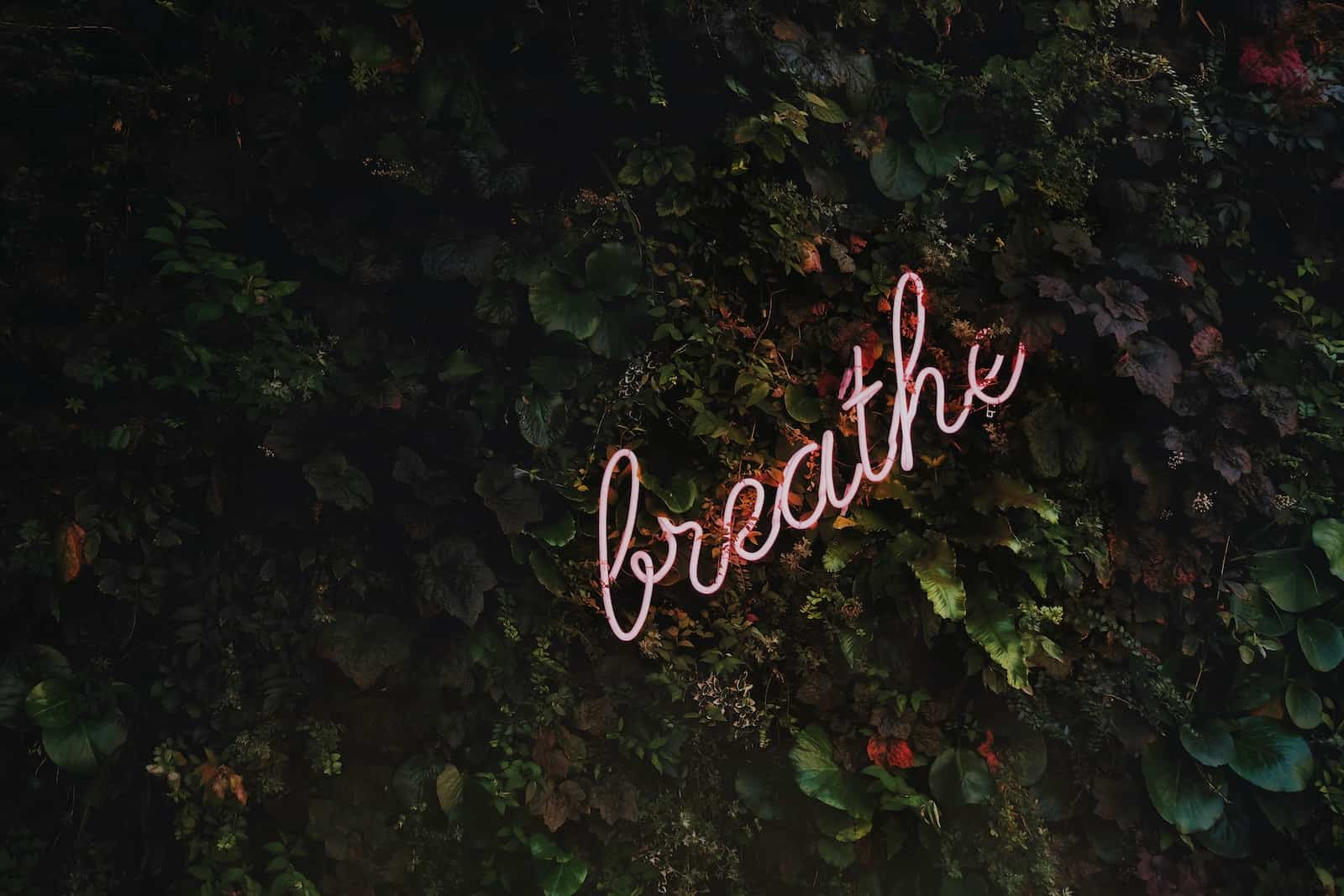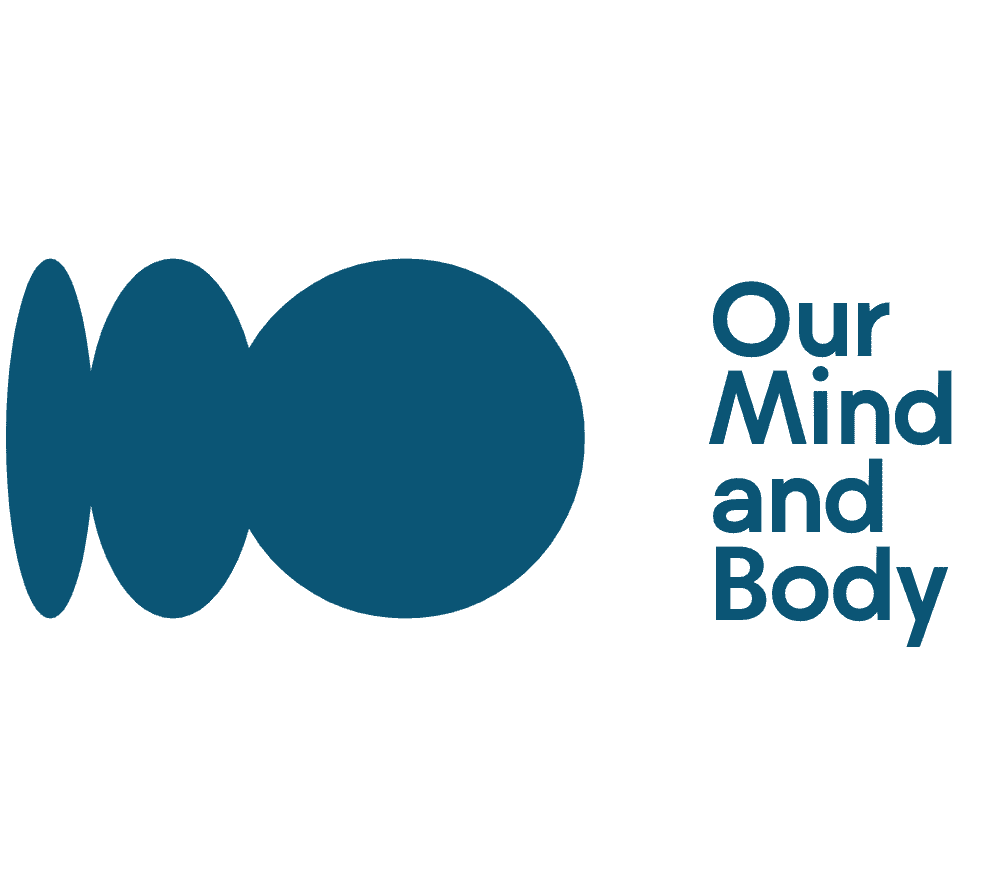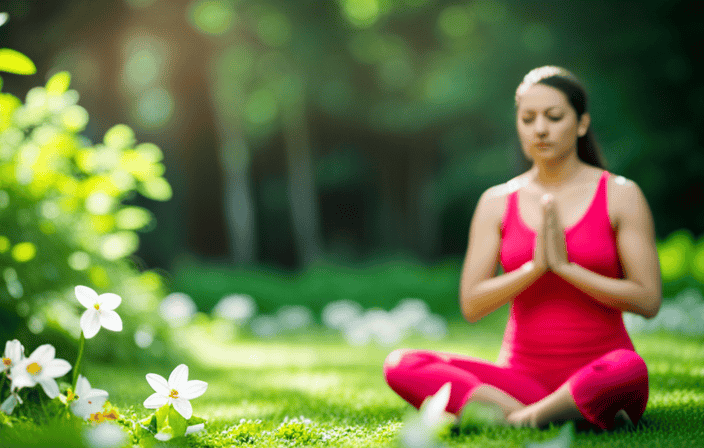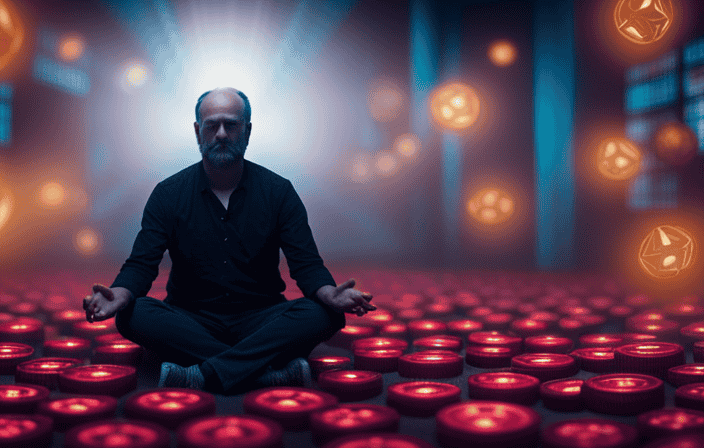Personal Growth
Relax and Unwind: Mastering Progressive Muscle Relaxation for Stress Relief

Progressive muscle relaxation is a powerful relaxation technique designed to help ease physical tension and reduce stress. It works by systematically tensing and then releasing different muscle groups throughout the body, allowing for deep relaxation of both your mind and body. This technique can be used daily or as needed in order to cope with life’s challenges.
The goal of progressive muscle relaxation is to recognize when you are feeling tense so that you can take action quickly to release it. By using this technique regularly, you will become more aware of how your body reacts to stress and learn how best to counter its effects on your overall well-being.
This simple exercise involves consciously contracting a specific group of muscles while taking slow, steady breaths before relaxing them again. With practice, you’ll find yourself able to relax quicker each time which results in greater relief from the physical tensions caused by stress.
Benefits
Progressive muscle relaxation (PMR) is a powerful technique for reducing physical tension caused by stress. It can have positive effects on both your mental clarity and emotional wellbeing, as well as improving sleep quality and helping to reduce anxiety.
The practice of PMR involves tensing and then relaxing each part of the body in turn, from head to toe. This helps you become aware of areas where you are holding onto unnecessary tension and encourages these muscles to relax. In addition to relieving any existing physical symptoms, regular practice will help prevent future onset or intensity of stress-related tension.
When done properly, this exercise should induce an overall sense of calmness that can last long after the session has finished. Regularly taking time out to use this method will help maintain good mental health and provide respite from daily worries. As you prepare for the exercise it is important to choose a comfortable position where you won’t be disturbed – lying down may work best but sitting up with back support can also be beneficial.
Preparing For The Exercise
As a certified stress management specialist, I’m here to help you prepare for progressive muscle relaxation techniques. This exercise is designed to ease the physical tension that stress causes in your body. With this exercise, you can expect relief from muscular discomfort and improved ability to cope with life’s challenges.
Let me now explain how to prepare for the exercise. Before beginning the process of progressive muscle relaxation, it’s important to have an appropriate environment that will facilitate relaxation and focus. First, find a quiet place where distractions are minimal or eliminated entirely. You may want to dim the lights or add some soothing music if it helps you relax further. Make sure you’ll be comfortable by wearing loose clothing or removing footwear as needed. Then, lie down on your back in bed or on a yoga mat on the floor and make yourself comfortable using pillows and blankets as necessary. Finally, take a few long slow breaths before starting the exercises so you can settle into calmness and stillness.
Now that we’ve prepared ourselves mentally and physically, let’s move onto learning how to perform the exercises designed specifically for relieving muscle tension and providing physical stress relief!
How To Perform The Exercise
Now that you know how to prepare for the exercise, let’s look at how to actually perform it. Progressive muscle relaxation techniques are designed to help ease physical tension stress causes and can be done in as little as 10 minutes. To get started, begin by sitting or lying down in a comfortable position with your eyes closed and focus on relaxing each of your muscles one-by-one from head to toe. Start by tensing up your forehead muscles for several seconds before releasing them and taking deep breaths. Then move onto other body parts such as your face, neck, chest, arms and legs while continuing to take slow deep breathes between each section until you have gone through all of them. This exercise is meant to help relax the entire body so make sure you don’t rush through any particular area too quickly.
Once you have finished going through each of your major muscle groups, allow yourself a few moments just to sit back and enjoy the feeling of total relaxation before opening your eyes again. You may feel more relaxed after this exercise but if not try repeating it once more using fewer repetitions per muscle group for an even deeper level of relaxation. Now that we’ve looked at how to perform progressive muscle relaxation techniques, let’s explore what to expect during and after the exercise.
What To Expect During And After The Exercise
Engaging in progressive muscle relaxation techniques can be a deeply calming experience, but it’s important to know what to expect before you begin. Here is an overview of the physical effects and recovery time you may encounter:
- Physical Effects:
- Your body will become more relaxed during and after the exercise as your muscles release tension.
- You may feel lightheaded or dizzy when standing up if you have been lying down for the full exercise.
- You may also notice your breathing patterns slow down, which is natural and expected.
- Recovery Time:
- It usually takes less than 10 minutes to complete the entire exercise; however, this varies depending on how long each individual holds their contracted muscle.
- Afterward, there should not be any lingering fatigue or soreness due to the low-intensity nature of the exercise.
- Calming Techniques:
- During the exercise, focus on deep breaths and let yourself drift off into a state of relaxation while tensing then releasing each muscle group.
- Before beginning another session, take some time to mentally note any areas that still feel tense so you can pay extra attention to those during subsequent exercises.
With these expectations in mind, engaging in progressive muscle relaxation techniques can be an incredibly effective way to cope with life’s challenges and ease physical tension caused by stress.
Tips For Maximizing Results
Now that you know what to expect during and after the exercise, let’s look at some tips for maximizing results. Progressive muscle relaxation techniques are a powerful tool in reducing tension and helping people cope with life’s challenges. To start, it’s best to practice this technique when your body is relaxed and comfortable. Make sure you are sitting or lying down in a quiet space free from distractions. It is also important to focus on each part of the body while engaging in the exercises rather than rushing through them.
When doing the progressive muscle relaxation exercises, be mindful of any areas of tightness or soreness as these may indicate an area where stress has built up over time and needs extra attention. This could include clenching fists, grinding teeth, tensing stomach muscles, etc. At times like these, take slow deep breaths and consciously relax those tense parts of your body before proceeding further. Additionally, pay close attention to how your body responds throughout the entire process – if something doesn’t feel right or causes discomfort stop immediately so that you can readjust yourself accordingly (or seek medical advice).
Once you become more familiar with progressive muscle relaxation techniques, try experimenting with different variations such as using visualization tools or focusing on specific sounds/aromas/sensations to help reduce tension even further. The key is to find out which methods work best for you and allow yourself plenty of room for personalization within your routine so that it becomes easier to stay consistent with applying these strategies into everyday life.
Variations
Progressive muscle relaxation (PMR) is like a toolbox of techniques that can be used to manage stress and cope with life’s challenges. Each technique has its own unique way of helping people relax and ease the physical tension stress causes in their bodies; however, they all share one common theme: differentiation between tense and relaxed muscles.
| Technique | Description | Benefits |
|---|---|---|
| Tension-Releasing Exercises | A series of gentle stretches designed to reduce muscular tightness and improve flexibility. The goal is to move around your body in ways that create an overall sense of relaxation. | Increased range of motion, improved blood flow, relieved joint stiffness & pain. |
| Relaxation-Based Techniques | Activities such as deep breathing, guided imagery, and visualization are combined to help bring about a feeling of calm and inner peace. These activities allow for mindful awareness as well as mental clarity. | Improved sleep quality, reduced anxiety/stress levels, increased self-awareness & focus. |
| Breathing-Focused Practices | This type of exercise involves focusing on different areas within the body while taking slow and steady breaths. It leads to conscious control over both breath rate and depth which creates feelings of relaxation through out the entire body system. | Improved concentration & alertness, slowed heart rate & respiration, decreased cortisol levels & better oxygen delivery throughout the body . |
By using these variations together we can get more effective results from our PMR practice! Body scanning is another great technique that focuses on consciously moving attention through each area of the body noticing any sensations or emotions present without judgment or analysis. With this approach we learn how to become aware of what’s happening inside us so we can make adjustments accordingly by releasing tension where needed or just being with it if necessary. By doing this regularly we gain greater insight into ourselves while learning how to effectively manage our emotional states during times when life’s challenges come up again and again!
When To Seek Professional Help
When it comes to managing stress, it’s important to know when it’s time to seek professional help. It can be difficult acknowledging that we need assistance in this area of our lives, but sometimes the physical and emotional toll of unresolved stress becomes too much for us to manage alone. Here are some signs that indicate you may need additional support with your stress management:
- Your daily activities start feeling overwhelming or unmanageable due to persistent feelings of anxiety.
- You find yourself frequently avoiding situations because they make you feel anxious or fearful.
- You have difficulty sleeping because of worries about work or personal matters.
- You’re unable to concentrate on tasks due to intrusive thoughts and racing mind activity related to worrying about life events or challenges.
If any of these describe your current experience, seeking professional help from a qualified mental health provider is recommended. Stress management counseling, anxiety management therapy, psychological counseling services, muscle relaxation therapy—all of these can provide invaluable resources for dealing with stress-related issues in a safe and supportive environment. Professional mental health support can also offer coping strategies tailored specifically for your individual needs so you can address the underlying cause behind your heightened levels of tension and distress more effectively than if trying methods on your own without guidance from an expert in the field of psychology and/or psychotherapy. With proper care and treatment, individuals suffering under extreme amounts of stress can return back to their everyday life free from the debilitating effects caused by prolonged periods of high levels pressure and strain.
Alternatives To Progressive Muscle Relaxation
According to the American Psychological Association, 70% of Americans experience physical symptoms due to stress. Fortunately, there are a variety of alternative relaxation techniques that can help reduce this tension and bring balance back into our lives. Tai Chi is an ancient Chinese practice involving slow movements and deep breathing that helps relax both the body and mind. Mindfulness meditation encourages us to focus on the present moment in order to stay connected with ourselves while reducing stress levels. Yoga Nidra is a form of guided yogic sleep which focuses on calming the nervous system through visualization and breath awareness exercises. Deep breathing practices such as diaphragmatic breathing or pranayama have been shown to lower blood pressure and heart rate, helping ease tension from the body. Finally, guided imagery involves using creative visualization tools such as mental images or stories in order to relax tense muscles and calm racing thoughts.
These alternatives to progressive muscle relaxation offer quick relief for those seeking immediate stress reduction solutions but also serve as helpful long-term strategies when incorporated into one’s lifestyle over time.
Long-Term Stress Management Strategies
As we have discussed, progressive muscle relaxation is a great way to ease physical tension and reduce stress in the short-term. However, for long-term stress management, it’s important to develop strategies that help you better cope with life’s challenges. Self-management techniques such as mindfulness meditation and yoga can be effective tools for managing chronic stress levels over time.
In addition to these practices, maintaining overall mental health through healthy lifestyle habits should not be overlooked. A balanced diet and regular exercise are essential components of any successful stress management plan. Additionally, getting enough sleep each night will ensure your body has adequate time to rest and recover from stressful situations.
Taking care of yourself by making time for leisure activities like reading or listening to music can also provide relief from daily stresses and improve your sense of well-being. As part of an ongoing effort toward improving one’s self-care regimen, it is important to find new ways of relaxing every day so that you can stay resilient when life presents difficult tasks or obstacles. Incorporating various relaxation techniques into your daily routine will make all the difference when striving towards long-term stress management.
Frequently Asked Questions
Are There Any Risks Associated With Progressive Muscle Relaxation?
A recent study by the American Psychological Association found that nearly 75% of adults in the United States struggle to cope with mental and physical stress. Progressive muscle relaxation (PMR) is a powerful tool used to reduce tension and anxiety, yet many people are unaware of potential risks associated with this technique. As a certified stress management specialist, I’d like to address these concerns so everyone can practice PMR safely and effectively.
One major risk factor associated with progressive muscle relaxation techniques comes from those living with certain physical disabilities or age-related impairments. For example, individuals suffering from arthritis may find it difficult to contract their muscles appropriately when performing PMR exercises. Similarly, children under the age of 12 should avoid attempting any PMR activity without being supervised by an adult due to their developing motor skills and lack of body awareness. It’s also important for seniors over 65 years old to consult with a physician before starting any type of exercise program as they might be at greater risk for injury due to weakened bones and joints.
Fortunately, there are ways around these issues – gentle stretching activities can help those who have difficulty contracting their muscles while low-impact exercises such as yoga can benefit seniors looking for safe alternatives to traditional forms of PMR. Additionally, if someone feels overwhelmed trying out new relaxation techniques on their own, seeking guidance from a qualified professional could make all the difference in achieving successful results.
As long as one takes into consideration individual needs and limitations beforehand, progressive muscle relaxation can prove very beneficial in reducing overall stress levels both mentally and physically. With proper instruction and preparation, anyone can start practicing PMR safely and enjoy its positive effects!
Is Progressive Muscle Relaxation Suitable For People With Physical Disabilities?
As a certified stress management specialist, I’m often asked whether progressive muscle relaxation is suitable for people with physical disabilities. With the right guidance and support, this can be an effective tool for reducing physical tension and providing stress relief. Let’s take a closer look at how it works:
Relaxation Techniques
The process of progressive muscle relaxation involves consciously tensing and releasing muscles in the body to promote deep physical and emotional relaxation. This type of exercise helps reduce feelings of anxiety by calming the nervous system. It also encourages improved circulation, which can help alleviate stiffness or pain associated with certain forms of physical disability.
Benefits
There are many benefits to using progressive muscle relaxation techniques when dealing with physical disabilities. Here are some examples:
- Physical Benefits
- Increases blood flow throughout the body
- Improves range of motion in joints and muscles
- Reduces tension in neck, back and other parts of the body
- Mental Benefits
- Enhances focus and concentration
- Alleviates symptoms of depression or anxiousness – Heightens self-awareness
- Emotional Benefits
- Stimulates positive thinking patterns
- Helps manage difficult emotions such as fear, anger or sadness
With practice, these relaxation techniques can provide much needed relief from stress while improving overall well-being. There may be some challenges involved but they can be overcome through patience and consistency in practicing these methods regularly over time.
How Quickly Will I Start To Feel The Benefits Of Progressive Muscle Relaxation?
When it comes to managing stress, progressive muscle relaxation is a great choice for achieving quick results. It’s an effective technique that can help you reduce physical tension and relax your body. But how quickly will you start to feel the benefits of this practice?
As a certified stress management specialist, I like to remind my clients that everyone experiences the effects of progressive muscle relaxation differently – some people may notice them immediately while others need more time before they begin to feel calmer and less tense. Generally speaking, though, most people tend to experience positive changes within 15 minutes after doing progressive muscle relaxation exercises. Here are four key things you can expect when practicing this technique:
- Improved breathing
- Reduced levels of muscular tension
- A decrease in anxiety or worry
- An overall feeling of calmness and wellbeing
It’s important to note that these results won’t be achieved overnight but with regular practice, over time you’ll gain greater control over your reactions to stressful situations as well as better manage any negative emotions. Even if it takes longer than expected for you to see measurable improvements from using progressive muscle relaxation techniques, don’t give up! The effort is worth it and sticking with it will eventually pay off.
I recommend being patient with yourself and giving yourself enough time each day – even just 10-15 minutes – so that you can reap all the wonderful rewards this kind of self-care brings. With consistency, dedication and perseverance, soon enough you’ll find yourself feeling much lighter emotionally and physically!
Can Children Practice Progressive Muscle Relaxation?
Have you ever wondered if children can practice progressive muscle relaxation? The answer is yes! It’s an effective tool for reducing stress, tension and anxiety in kids of all ages. As a certified stress management specialist, I have seen first-hand the beneficial effects that this technique has on young people.
Progressive muscle relaxation involves tensing and then releasing different muscle groups in your body to help reduce physical tension. Kids are often able to pick up on this method quickly, as it requires no special equipment or instructions. For example, when teaching a child progressive muscle relaxation, you can start by asking them to tense their feet, hold for five seconds, and then relax them. Then move onto their arms and repeat the same process. This helps children learn how to release built-up tension in their muscles and how to recognize the difference between being relaxed and being tense.
As with any new skill, practicing regularly is key – especially with progressive muscle relaxation techniques which involve focusing on one’s breath. With regular practice over time, children will be better equipped to manage their stress levels more effectively during difficult moments throughout life. So don’t hesitate to introduce your little ones to these tools – they may just thank you later!
How Often Should I Practice Progressive Muscle Relaxation?
I’m often asked how often people should practice progressive muscle relaxation for the best tension relief. As a certified stress management specialist, I recommend that you make progressive muscle relaxation exercises a regular part of your routine if you are looking to decrease physical and mental tension. Here’s why:
The benefits of engaging in these techniques regularly include improved sleep quality, increased focus and concentration, reduced anxiety levels, and decreased overall muscular tension. Plus, since most of us experience some form of chronic pain or tightness throughout our day-to-day lives, it’s important to take steps to reduce this discomfort.
If you want to truly enjoy the full range of potential benefits from practicing progressive muscle relaxation on a regular basis here is what I suggest:
- Practice at least once daily for 10 minutes each session
- Add an additional 5-10 minute session before bedtime as needed
- Incorporate deep breathing exercises into every session
- Experiment with different positions (lying down vs sitting up) to find which ones offer the most comfort during your sessions
By committing just 20 minutes per day towards reducing physical tension through progressive muscle relaxation techniques, you can dramatically improve your overall health and well-being – both mentally and physically. So don’t wait any longer; start incorporating these simple but powerful techniques into your life today!
Conclusion
In conclusion, Progressive Muscle Relaxation is a powerful tool for reducing the physical tension and stress caused by life’s challenges. It can be used effectively as part of an overall stress management strategy, or on its own to help you relax quickly. While there are some risks associated with this technique, it is generally safe and suitable for people with physical disabilities. With regular practice, children and adults alike can enjoy the many benefits that come from using Progressive Muscle Relaxation.
It is important to remember that relaxation techniques such as PMR do not replace medical treatments; they should only be used in conjunction with your doctor’s advice. The frequency of practice will vary depending on individual needs but I recommend engaging in at least two 30-minute sessions per week where possible. My clients have found that even short breaks during their day can make a significant difference to how they feel emotionally and physically over time.
I encourage everyone to explore different relaxation methods until they find one that works best for them – whether it’s yoga, deep breathing exercises, guided imagery or PMR. If you feel overwhelmed or tense due to life’s pressures, try out this easy yet effective method and experience the peace of mind it brings!
Meet Kalinda, the passionate and visionary Editor-in-Chief of OurMindAndBody.com. Kalinda is a beacon of light in the realm of holistic well-being, and her mission is to positively impact the lives of others by inspiring them to embrace a healthier and more fulfilling lifestyle.
With a deep-rooted love for meditation, yoga, and spirituality, Kalinda’s journey toward self-discovery and personal growth started at a young age. She found solace and strength in these practices, which not only helped her cope with the challenges of life but also provided her with a profound sense of purpose. Eager to share the transformative power of these ancient disciplines, Kalinda embarked on a path to spread awareness and understanding.
Personal Growth
Unlocking Personal Fulfillment: Embracing Learning, Travel, Fitness, And Spiritual Growth

Are you prepared to achieve personal satisfaction and welcome a lifestyle filled with education, exploration, wellness, and spiritual development?
Imagine a journey of self-discovery, where each step brings you closer to your passions and purpose.
In this article, I will guide you through the transformative power of knowledge, the importance of career advancement, and the benefits of prioritizing mental and physical well-being.
Get ready to embark on a path that will redefine your life, boost your confidence, and allow you to experience the world in a whole new way.
Key Takeaways
- Learning and personal growth are essential for career advancement and should be pursued through education and the pursuit of passions.
- Traveling promotes self-discovery, personal growth, and exposure to new cultures and perspectives.
- Prioritizing fitness and mental health improves overall well-being, reduces stress and anxiety, and enhances self-confidence.
- Overcoming obstacles, pursuing passions, and engaging in spiritual growth contribute to a fulfilled life.
4 Things for Personal Growth
I must actively pursue personal growth by embracing learning, travel, fitness, and spiritual growth in order to unlock my personal fulfillment.
It is through these experiences that I can truly discover my potential and live a life of purpose and meaning.
Learning is the key to career advancement and a fulfilling life. It opens doors to new opportunities and expands my knowledge and skills.
Traveling allows me to explore new cultures, broaden my perspectives, and step out of my comfort zone.
Fitness not only improves my physical health but also boosts my mental well-being, giving me the confidence and strength to overcome challenges.
Lastly, spiritual growth connects me with something greater than myself, providing guidance, peace, and a sense of purpose.
By actively embracing these pillars of personal growth, I can unlock my full potential and live a life filled with fulfillment and joy.
Importance of Knowledge
Gaining knowledge is essential for career advancement and personal development. It is through knowledge that we can expand our horizons, challenge ourselves, and unlock new opportunities.
Here are three reasons why knowledge is so important:
-
Knowledge opens doors: With a solid foundation of knowledge, we can pursue new career paths, take on challenging projects, and stand out in a competitive job market. By continuously learning and acquiring new skills, we position ourselves for success and growth.
-
Knowledge empowers us: When we have knowledge, we feel confident and capable. It gives us the tools to navigate through life’s challenges and make informed decisions. With knowledge, we can face obstacles head-on and overcome them with resilience.
-
Knowledge fuels personal growth: Learning is a lifelong process, and it is through knowledge that we can continue to evolve and grow as individuals. It broadens our perspectives, deepens our understanding of the world, and helps us discover our true passions and purpose.
So, let’s embrace the power of knowledge and never stop learning. It is the key to unlocking personal fulfillment and achieving our greatest potential.
Career Advancement
Expanding my knowledge and skills is crucial for advancing my career. In today’s fast-paced and competitive world, staying stagnant is not an option. By continuously learning and seeking personal growth, I am equipping myself with the tools necessary to excel in my chosen field.
Whether it’s through further education, attending workshops, or seeking mentorship, I am taking proactive steps to stay ahead. Embracing a growth mindset and being open to new ideas and perspectives will not only enhance my expertise but also make me a valuable asset to any organization.
Every opportunity for learning is a chance for me to improve and stand out from the crowd. So, I choose to embrace the challenge, push my boundaries, and unlock my full potential, knowing that the rewards of career advancement are well worth the effort.
Financial Concerns
Confronting financial concerns head-on is essential for achieving career advancement. It’s natural to feel intimidated about going back to school or making a career change, but we must overcome these fears in order to unlock our full potential. Here are four powerful ways to tackle financial concerns and pave the way for a fulfilling career:
-
Sell a life insurance policy: Don’t let financial worries hold you back. Consider selling a life insurance policy to alleviate immediate financial burdens and invest in your education.
-
Utilize online calculators: Determine the value of your policy using online calculators. This will give you a clear understanding of the funds you can receive and how they can support your career goals.
-
Pursue childhood dreams or newfound passions: Don’t let excuses stop you from pursuing what truly makes you happy. Embrace your passions and let determination guide you towards achieving your desired career.
-
Believe in yourself: Remember, life shouldn’t be a chore. By doing what you love, you can create a career that brings you joy and fulfillment. Trust in your abilities and believe that you have what it takes to achieve your goals.
Take control of your financial concerns and open the door to a career that brings you true happiness.
Pursuing Passions
To pursue my passions, I need to focus on what truly brings me joy and take determined action towards achieving my desired career. It’s important to remember that life is too short to settle for anything less than what makes me truly happy.
Whether it’s a childhood dream or a newfound passion, I owe it to myself to pursue it wholeheartedly. It may seem daunting at first, but with determination and perseverance, I can overcome any obstacles that come my way.
I believe that happiness in life is not just a luxury, but a necessity. So I will dismiss any excuses that hold me back and take the necessary steps to make my dreams a reality.
By pursuing my passions, I will unlock a sense of fulfillment and live a life that is truly meaningful to me.
Benefits of Travel
Experiencing new places and cultures broadens my perspective and fosters personal growth. When I travel, I immerse myself in unfamiliar environments, and it’s in these moments of exploration that I truly discover who I am.
The excitement of imagining train rides through the wilderness or trekking through the jungle fuels my sense of adventure and pushes me out of my comfort zone. As I try new activities and step into the unknown, I find myself uncovering hidden passions and redefining my personal identity.
Traveling not only boosts my confidence but also encourages self-reflection and introspection. It’s in these moments of solitude that I gain a deeper understanding of myself and the world around me.
So, I embrace the beauty of travel and allow it to shape me into a more well-rounded and fulfilled individual.
Expanding the Mind
Exploring new ideas and perspectives has opened my mind to endless possibilities. Traveling has allowed me to expand my horizons and break free from the limitations of my comfort zone. It has shown me that there is so much more to life than what I had previously known.
Through my travels, I have learned three valuable lessons that have deeply impacted my personal growth:
-
Embrace the unknown: Stepping into unfamiliar territory can be intimidating, but it is where true growth happens. It challenges you to adapt, learn, and discover parts of yourself that you never knew existed.
-
Cultivate empathy: Traveling exposes you to different cultures, beliefs, and ways of life. It teaches you to see the world through the eyes of others, fostering a sense of empathy and understanding that can greatly enrich your interactions with people from all walks of life.
-
Embrace the present moment: Traveling forces you to live in the present. It teaches you to appreciate the beauty of each moment, to let go of worries and expectations, and to fully immerse yourself in the experiences that life has to offer.
By embracing these lessons, I have unlocked personal fulfillment and a deeper sense of purpose in my life. I encourage you to embark on your own journey of self-discovery and see how it can transform your perspective on life.
Boosting Confidence
Boosting confidence has been a transformative journey that has empowered me to break free from self-doubt and embrace my true potential.
It all started with small steps, pushing myself outside of my comfort zone and taking on new challenges. Each accomplishment, no matter how small, fueled my belief in myself and my abilities.
I discovered that confidence is not something you are born with; it is something you can cultivate and grow through practice and perseverance. By embracing failure as a learning opportunity and celebrating my successes, I began to see my self-worth and value.
As my confidence grew, so did my courage to pursue my passions and dreams. I realized that I am capable of achieving greatness and that my potential knows no limits.
Boosting my confidence has been the key to unlocking personal fulfillment and living a life of purpose and joy.
Experiencing New Cultures
Now that we have explored the importance of boosting confidence, let’s dive into the exhilarating world of experiencing new cultures.
Traveling to different countries allows us to immerse ourselves in unfamiliar environments and gain a deeper understanding of the world. It opens our minds to diverse perspectives, customs, and traditions.
From tasting exotic cuisine to witnessing breathtaking landmarks, every moment spent exploring a new culture is an opportunity for personal growth and self-discovery.
Stepping out of our comfort zones and embracing the unknown not only broadens our horizons but also builds resilience and adaptability. It teaches us to appreciate the beauty in our differences and find common ground with people from all walks of life.
So, pack your bags, embark on a journey of a lifetime, and let the wonders of experiencing new cultures transform you into a more enlightened and fulfilled individual.
Importance of Fitness
Improving my physical health through regular exercise has been a transformative journey for me. It all started with small steps, like taking walks or going for runs. I realized that I didn’t need a fancy gym membership to prioritize my well-being. The key was finding an exercise routine that I enjoyed and that made me feel good about myself.
Not only did regular exercise reduce my stress and anxiety, but it also released those wonderful endorphins that improved my mood. I also noticed an increase in my self-confidence as I pushed myself to achieve new fitness goals.
Incorporating exercise into my daily routine has enhanced my overall well-being, both mentally and physically. Remember, it’s never too late to start taking care of yourself and embracing a healthier lifestyle.
Physical and Mental Well-being
Taking care of my physical and mental well-being has become a top priority in my life. I have realized that in order to live a fulfilling life, I must prioritize my health.
Regular exercise has not only improved my physical health but has also had a positive impact on my mental well-being. The release of endorphins during exercise has boosted my mood and reduced my stress and anxiety levels.
I have also learned the importance of prioritizing mental health and practicing self-care. Taking breaks and seeking therapy when needed has allowed me to maintain a healthy mindset.
By prioritizing my physical and mental well-being, I have been able to pursue my passions and find fulfillment in all areas of my life.
Remember, taking care of yourself is not selfish, it is necessary for personal growth and overall well-being.
Frequently Asked Questions
How can I overcome financial barriers to pursuing education or a career change?
How can I overcome financial barriers to pursuing education or a career change? By exploring options like selling a life insurance policy or utilizing online calculators to determine its value, I can fund my education and make my dreams a reality.
What are some practical ways to incorporate exercise into my daily routine?
To incorporate exercise into my daily routine, I can start small by taking walks or doing quick workouts at home. Consistency is key, and finding activities I enjoy will help me stay motivated and improve my overall well-being.
How can I prioritize mental health and well-being in my life?
To prioritize my mental health and well-being, I must treat it like a VIP – Very Important Priority! By practicing self-care, seeking support, and taking breaks, I can create a foundation for a fulfilled and balanced life.
What steps can I take to save money and make travel more affordable?
To save money and make travel more affordable, I can start by planning ahead and budgeting for travel expenses. Researching affordable destinations and utilizing travel rewards programs can also help reduce costs and make my travel dreams a reality.
How can I cultivate spiritual growth and enhance my personal fulfillment?
To cultivate spiritual growth and enhance personal fulfillment, I must explore and embrace activities that align with my values and beliefs. Through self-reflection, meditation, and engaging in meaningful practices, I can deepen my spiritual connection and find true fulfillment.
Conclusion
In conclusion, unlocking personal fulfillment is a journey that involves embracing learning, travel, fitness, and spiritual growth.
By continuously seeking knowledge, we can advance in our careers and pursue our passions. For example, Sarah, a single mother, went back to school while selling life insurance policies to fund her education. Through her determination and hard work, she not only achieved her dream of becoming a nurse but also inspired her children to never give up on their goals.
Sarah’s story reminds us that with perseverance, anything is possible.
So let us embrace personal growth, step out of our comfort zones, and unlock the potential within us to live a fulfilled life.
Meet Kalinda, the passionate and visionary Editor-in-Chief of OurMindAndBody.com. Kalinda is a beacon of light in the realm of holistic well-being, and her mission is to positively impact the lives of others by inspiring them to embrace a healthier and more fulfilling lifestyle.
With a deep-rooted love for meditation, yoga, and spirituality, Kalinda’s journey toward self-discovery and personal growth started at a young age. She found solace and strength in these practices, which not only helped her cope with the challenges of life but also provided her with a profound sense of purpose. Eager to share the transformative power of these ancient disciplines, Kalinda embarked on a path to spread awareness and understanding.
Personal Growth
Unleashing Your Spiritual Gifts: A Path To Personal Growth And Healing

Interestingly, a lot of us carry within us dormant spiritual abilities that are just waiting to be awakened. These inherent talents have the capacity to fuel our personal development and healing, thus drawing us nearer to our authentic selves and the divine.
By tapping into these innate abilities, we embark on a transformative journey of self-discovery and connection. In this article, we will explore the profound impact of unleashing our spiritual gifts, how to identify and develop them, and the challenges we may face along the way.
Get ready to embark on a path of personal growth and healing as we unleash the power within.
Key Takeaways
- Unleashing your spiritual gifts can enhance personal growth and development.
- Identifying and developing your spiritual gifts can lead to a sense of fulfillment and satisfaction.
- Utilizing and honoring your spiritual gifts can bring healing, inspiration, and guidance to others.
- Overcoming challenges and embracing your spiritual gifts can contribute to the overall well-being and harmony of society.
What are Spiritual Gifts?
I know that spiritual gifts are unique abilities or talents that we possess, which can enhance our personal growth and development, contribute to the well-being of others, and deepen our connection with the divine.
They are like hidden treasures waiting to be discovered and unleashed. When we explore our divine connections and tap into our spiritual gifts, we unlock our hidden potentials and embark on a transformative journey of self-discovery and healing.
It is through these gifts that we find purpose and fulfillment, making a positive impact on the lives of others. By embracing our spiritual gifts, we not only enhance our overall well-being and happiness but also foster unity and interconnectedness within our communities.
So let us have the courage to explore, unleash, and share our spiritual gifts, for they hold the power to uplift, heal, and transform.
Identifying Your Gifts
Exploring and recognizing our unique talents and abilities is crucial in identifying the spiritual gifts that can contribute to our personal development and overall well-being. It is through this process of self-discovery that we can uncover the passions and interests that ignite our soul and bring us joy. By seeking guidance from mentors or experts in the field, we can gain valuable insights and support in honing our gifts. It is important to trust our intuition and inner guidance, as they often lead us to the areas where we excel. Engaging in regular practice and self-reflection allows us to deepen our understanding of our gifts and refine our skills. Attending workshops, courses, or retreats related to our gifts provides opportunities for growth and learning. Surrounding ourselves with like-minded individuals creates a supportive community that encourages us to embrace our gifts and share them with the world.
Utilizing Your Gifts
Utilizing my spiritual gift allows me to make a meaningful impact on others and contribute to the overall well-being and harmony of society. By maximizing my potential and harnessing my abilities, I am able to bring healing, inspiration, and guidance to those in need.
Through my gift, I have the power to touch lives, uplift spirits, and create positive change. It is a beautiful responsibility that fills me with a sense of purpose and fulfillment.
To fully utilize my gift, I constantly refine and improve my skills. I seek out platforms and organizations where my gift is valued and recognized. I offer my gift with humility and authenticity, always expressing gratitude for its impact.
I also practice self-care to maintain my energy and well-being, setting boundaries to protect my gift from being exploited or drained.
By embracing and utilizing my spiritual gift, I am able to contribute to the greater good and play my part in creating a more compassionate and interconnected world.
Challenges and Impact
Navigating the challenges and impact of my spiritual gift is like walking through a dense forest, where the obstacles and setbacks I encounter along the way only strengthen my determination to bring healing, inspiration, and guidance to others.
It is not always easy to embrace and utilize my gift, especially in a society that often values conformity and follows rigid expectations. But I have learned that overcoming obstacles is an essential part of the journey.
Each challenge I face pushes me to dig deeper within myself, to confront my fears and doubts, and to grow stronger in my abilities. By breaking free from societal norms and expectations, I am able to fully embrace and share my gift, creating a more compassionate and empathetic community.
The impact of unleashing my spiritual gift goes beyond myself, as it inspires others to explore and develop their own gifts. Together, we contribute to the overall well-being and harmony of society, bringing support and healing to those in need.
Frequently Asked Questions
What are some common misconceptions about spiritual gifts?
Misconceptions about spiritual gifts: debunking myths, understanding true nature. Overcoming self-doubt: building self-belief, embracing inner power. It’s important to challenge preconceived notions and trust in the unique gifts we possess for personal growth and healing.
How can I overcome self-doubt and gain confidence in my spiritual gifts?
To overcome self-doubt and build confidence in your spiritual gifts, remember that you are unique and have something valuable to offer. Embrace your strengths, seek support from mentors, and celebrate small victories along the way. You are capable of greatness.
Are there any specific practices or rituals that can help me develop my spiritual gifts?
Meditation practices and energy healing techniques can help develop spiritual gifts. By quieting the mind and tapping into the divine energy, we can deepen our connection and unlock our hidden potentials. Embrace these practices and watch your gifts unfold.
Can spiritual gifts change or evolve over time?
Yes, spiritual gifts can change and evolve over time. As we grow and learn, our understanding and connection with the divine deepens, allowing us to discover new aspects of ourselves and our gifts. Age can also bring wisdom and a deeper understanding of our purpose, which can influence the way our gifts manifest. Embrace the journey of evolution and trust that your gifts will continue to unfold in beautiful ways.
How can I find a balance between using my spiritual gifts and taking care of myself?
Finding balance between using my spiritual gifts and taking care of myself requires self-awareness and boundaries. Prioritize self-care practices that nourish your mind, body, and soul. Remember, to truly help others, we must first take care of ourselves.
Conclusion
As I reflect on the journey of unleashing my spiritual gifts, I am filled with a profound sense of gratitude and wonder.
It is through recognizing and developing these innate abilities that I have experienced personal growth and healing like never before.
Like a butterfly emerging from its cocoon, I have transformed, and I invite you to join me on this transformative path.
Embracing our spiritual gifts is not only a gift to ourselves but also to those around us, as we inspire and uplift each other in ways we never thought possible.
So let us honor our gifts, let us explore and develop them, and together, let us create a harmonious and compassionate world.
Meet Kalinda, the passionate and visionary Editor-in-Chief of OurMindAndBody.com. Kalinda is a beacon of light in the realm of holistic well-being, and her mission is to positively impact the lives of others by inspiring them to embrace a healthier and more fulfilling lifestyle.
With a deep-rooted love for meditation, yoga, and spirituality, Kalinda’s journey toward self-discovery and personal growth started at a young age. She found solace and strength in these practices, which not only helped her cope with the challenges of life but also provided her with a profound sense of purpose. Eager to share the transformative power of these ancient disciplines, Kalinda embarked on a path to spread awareness and understanding.
Personal Growth
Deepen Your Spiritual Journey: Essential Disciplines For Growth

Setting out on a spiritual quest is a deeply meaningful endeavor that demands commitment, strictness, and loyalty.
Delving deeper into our connection with the divine necessitates the practice of essential disciplines. From prayer to fasting, meditation to study, simplicity to solitude, and service, these sacred rituals serve as the stepping stones towards personal growth and spiritual enlightenment.
Each discipline, like a melody of the soul, intertwines with the others, forming a symphony that resonates within us, leading us towards a profound understanding of ourselves and a stronger connection with the divine.
Key Takeaways
- Prayer is a crucial spiritual discipline that fosters a deeper connection with God, brings peace and comfort, and has physical and mental health benefits.
- Fasting is a practice that promotes spiritual growth, enhances self-control, and detoxifies the body while deepening the relationship with a higher power.
- Meditation is a significant discipline that increases inner peace, promotes relaxation and focus, and strengthens the connection with the universe.
- Study is an important discipline for deepening understanding and knowledge of God, providing guidance for daily life, and contributing to personal transformation.
What is Prayer?
Prayer is an essential spiritual discipline that I engage in regularly to deepen my relationship with God and find peace, hope, and comfort during difficult times.
I believe that prayer is not only a way to communicate with God, but also a means to cultivate a deeper connection with a higher power.
I have found that different methods of prayer, such as prayers of thanks, intercession, and meditation, allow me to approach prayer in a way that feels most authentic to me.
Prayer not only brings solace and guidance, but it also has a profound impact on my mental health. Regular prayer practice has helped me find moments of introspection, reflection, surrender, and gratitude.
It has positively impacted my overall well-being and has provided a source of strength and resilience during challenging times.
Benefits of Fasting
Fasting is like a spiritual cleanse, allowing me to strip away the distractions of life and focus on nourishing my soul. Through the discipline of fasting, I have discovered numerous benefits that have deepened my spiritual journey.
Fasting benefits my physical body by detoxifying it and improving digestion, leading to increased resistance to diseases.
Fasting benefits my mental and emotional well-being by enhancing self-control, mental clarity, and determination.
Fasting benefits my spiritual growth by deepening my relationship with a higher power through intensified prayer and self-reflection.
Fasting and spiritual growth go hand in hand, as this practice strengthens my conscious awareness, resistance to temptation, and willpower. It allows me to gain control over my desires and strengthens my connection with a higher power.
Fasting has truly been a transformative experience on my spiritual journey, bringing me closer to God and helping me cultivate a deeper sense of purpose and fulfillment.
Types of Meditation
Meditation has various types, such as mindfulness, guided visualization, mantra repetition, loving-kindness, and chakra meditation. All of these types can enhance my spirituality and increase inner peace and joy.
Mindfulness meditation allows me to be fully present in the moment, observing my thoughts and emotions without judgment. It helps me cultivate a sense of calmness, relaxation, and well-being. By focusing on my breath and bringing my attention to the present moment, I can let go of worries and anxieties. This allows me to experience a deeper connection with myself and the world around me.
Chakra meditation, on the other hand, involves focusing on the different energy centers in the body, promoting balance and harmony. It helps me tap into my intuition, creativity, and spiritual connection.
Through these types of meditation, I can deepen my spiritual journey and experience a greater sense of inner peace and joy.
The Importance of Study
Studying is a vital aspect of my spiritual development as it allows me to gain a deeper understanding of my faith and cultivate wisdom and discernment in my daily life. Through various study methods such as Bible studies and devotional readings, I am able to dive into the teachings and principles that guide my beliefs. This dedicated time of study not only enhances my spiritual growth but also strengthens my personal connection with God. It contributes to my personal transformation by providing guidance and clarity on how to live in accordance with my beliefs. The insights I gain through study help me navigate the complexities of life and make decisions that align with my spiritual values. It cultivates awareness of my beliefs and values, allowing me to continually grow and evolve on my spiritual journey.
| Study Methods | Personal Transformation |
|---|---|
| Deepens understanding of faith and teachings | Cultivates wisdom and discernment |
| Provides clarity on living in accordance with beliefs | Contributes to personal growth |
| Develops insights into spiritual principles | Strengthens connection with God |
| Cultivates awareness of beliefs and values | Fosters a deeper understanding of oneself |
| Enhances self-awareness | Improves mental and emotional well-being |
Simplicity and Solitude
Simplicity and solitude have a profound impact on my spiritual well-being. They allow me to cultivate inner peace and clarity. Exploring minimalism has taught me to focus on what truly matters in life – my relationship with God. By removing distractions and living a life of simplicity, I am able to create space for deeper connection and reflection.
It is in these moments of solitude that I find solace and rejuvenation. Finding solitude in nature has been particularly transformative for me. The serene beauty of the natural world reminds me of God’s presence and fills me with awe and gratitude. In the stillness of the outdoors, I can hear His gentle whispers and feel His guiding hand.
Simplicity and solitude are essential disciplines that continue to deepen my spiritual journey and bring me closer to God.
The Power of Service
Through the power of service, I have witnessed firsthand the transformative impact of love and compassion on individuals and communities. It is truly remarkable how a simple act of kindness can bring joy, healing, and hope to those in need. When we engage in service, we not only cultivate compassion within ourselves, but we also create a ripple effect that spreads positivity and kindness throughout the world.
Service is not just about giving, but it is also about receiving. It is through serving others that we often find a deeper sense of purpose and fulfillment. By aligning our actions with our spiritual values, we not only express our love and gratitude, but we also deepen our spiritual connection and foster personal growth.
In my own journey, service has allowed me to build meaningful connections and relationships, making a positive impact on others’ lives. It has taught me the importance of selflessness and the power of empathy. Through service, I have learned that even small acts of kindness can have a profound effect on someone’s life.
Incorporating a culture of service into our lives not only benefits others but also brings us closer to our true selves. It is in service that we discover the true essence of our being and experience the interconnectedness of all humanity. By extending a helping hand, we contribute to building a sense of community and create a better world for everyone.
Service is not always easy, and it requires sacrifice and selflessness. However, the rewards far outweigh the challenges. It is in service that we find true fulfillment and live out the teachings of love and compassion. So, let us embrace the power of service and continue to cultivate compassion in our daily lives, knowing that even the smallest acts of kindness can make a world of difference.
| The Power of Service | ||
|---|---|---|
| Cultivates compassion | Fosters a sense of purpose | Builds connections |
| Makes a positive impact | Aligns actions with spiritual values | Expresses love and gratitude |
As I continue on my spiritual journey, I have come to realize the immense power of service in deepening my connection with God and others. Through acts of kindness and compassion, I have witnessed the transformative impact it has on both myself and those around me.
However, I understand that service is just one aspect of nurturing my spirituality. Now, I find myself drawn to exploring different prayer methods and techniques for cultivating simplicity and solitude. Prayer is not just a one-size-fits-all practice; it is a deeply personal and intimate conversation with a higher power.
By exploring different prayer methods, I hope to deepen my understanding of how to connect with God in a way that resonates with my heart and soul. Additionally, I am eager to learn how to cultivate simplicity and solitude in my daily life, as these disciplines provide the space and clarity needed for spiritual growth and self-reflection.
Through embracing these essential disciplines, I believe I will continue to deepen my spiritual journey and draw closer to the divine.
I am excited to explore different prayer methods and techniques to cultivate a deeper connection with God and nourish my spiritual journey. Prayer is an essential spiritual discipline that brings peace, hope, and comfort during difficult times. It allows for introspection, reflection, surrender, and gratitude. By exploring different prayer techniques, I hope to deepen my faith and strengthen my relationship with a higher power.
Additionally, I am eager to explore the benefits of fasting for spiritual growth. Fasting is a powerful discipline that enhances self-control, mental clarity, and determination. It detoxifies the body, improves digestion, and increases resistance to diseases. Fasting also fosters empathy, cultivates generosity through charity, and deepens the relationship with a higher power through intensified prayer and self-reflection. I believe that by incorporating fasting into my spiritual journey, I will gain control over my desires, strengthen my willpower, and experience a deeper connection with God.
Frequently Asked Questions
How can prayer help in overcoming addiction and temptation?
Prayer is a powerful tool in overcoming addiction and temptation. Through prayer, I find strength, guidance, and support from a higher power. It helps me surrender my struggles and find the inner peace needed to resist cravings and make positive choices.
What are some specific physical and mental health benefits of regular prayer practice?
Regular prayer practice offers numerous physical and mental health benefits. It reduces stress, promotes emotional well-being, improves sleep, strengthens the immune system, enhances focus and concentration, and provides inner peace and comfort. Prayer also helps overcome addiction and temptation by fostering a deeper connection with God, providing guidance and strength, and promoting self-reflection and surrender.
What are the different types of fasting and how do they vary in strictness and duration across different religions?
There are various types of fasting practiced across different religions. These include intermittent fasting, absolute fasting, and partial fasting. The strictness and duration of fasting can vary based on religious traditions and individual beliefs.
How does meditation enhance spirituality and strengthen the connection with the universe?
Meditation and mindfulness practices enhance spirituality by allowing for self-discovery and a deeper connection with the universe. Through quiet reflection, we cultivate inner peace, heightened intuition, and a strengthened sense of interconnectedness with all beings.
How does simplicity and solitude contribute to personal growth and overall well-being?
Simplicity and solitude contribute to personal growth and overall well-being by allowing us to focus on what truly matters, finding contentment in minimalism, and cultivating a deeper connection with God. Through solitude, we find peace, clarity, and a sense of purpose.
Conclusion
In conclusion, deepening my spiritual journey through essential disciplines has been a transformative experience.
Prayer has brought me peace and comfort in challenging times, while fasting has taught me self-control and a deeper connection with a higher power.
Through meditation, I have found relaxation and inner peace, strengthening my connection with myself and the universe.
Study has deepened my understanding of God and provided guidance for daily life.
Simplicity and solitude have helped me remove distractions and cultivate contentment.
Lastly, service has allowed me to show love and compassion towards others, contributing to my personal growth.
While some may argue that these disciplines require too much time and effort, the benefits far outweigh any perceived challenges.
By embracing these practices, I have gained a deeper understanding of myself and a stronger connection with a higher power.
I encourage all to embark on this spiritual journey and experience the profound growth and transformation it brings.
Meet Kalinda, the passionate and visionary Editor-in-Chief of OurMindAndBody.com. Kalinda is a beacon of light in the realm of holistic well-being, and her mission is to positively impact the lives of others by inspiring them to embrace a healthier and more fulfilling lifestyle.
With a deep-rooted love for meditation, yoga, and spirituality, Kalinda’s journey toward self-discovery and personal growth started at a young age. She found solace and strength in these practices, which not only helped her cope with the challenges of life but also provided her with a profound sense of purpose. Eager to share the transformative power of these ancient disciplines, Kalinda embarked on a path to spread awareness and understanding.
-

 Aura4 weeks ago
Aura4 weeks agoUnderstanding The Grey Aura: Balance, Neutrality, And Personal Growth
-

 Personal Growth3 months ago
Personal Growth3 months agoThe Power Of Kindness: Cultivating Happiness, Connection, And Personal Growth
-

 Meditation3 weeks ago
Meditation3 weeks agoUnderstanding Spiritual Attacks: Types, Signs, And Protection
-

 Meditation1 month ago
Meditation1 month agoThe Symbolic Significance Of Sand Dollar: Spiritual Meanings And Cultural Connections
-

 Inspiration2 weeks ago
Inspiration2 weeks agoThe Power Of Spiritual Impartation: Empowering Believers And Cultivating Growth
-

 Inspiration3 months ago
Inspiration3 months agoThe Role And Qualities Of A Spiritual Advisor: A Guide On The Path
-

 Spirituality3 months ago
Spirituality3 months agoThe Power Of Spiritual Cleansing: History, Benefits, Techniques, And Personal Experiences
-

 Spirituality3 months ago
Spirituality3 months agoRecognizing And Overcoming Spiritual Attacks: A Guide To Protection


















